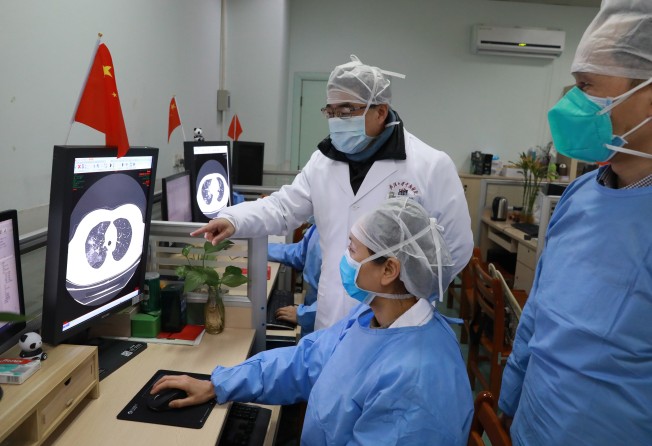China adds new symptoms to coronavirus diagnostic list
- Health authorities also warn that discovery of virus in patients’ faeces suggest that it could be another source of transmission
- Virology institute at the epicentre of outbreak applies to use experimental drug in treatment

China’s National Health Commission has expanded its diagnostic guidelines to help identify patients who have contracted the deadly new coronavirus.
In an updated treatment plan released on Wednesday, the commission also warned that it was investigating whether aerosol and digestive tract infections were transmission modes after traces of the coronavirus were found in patients’ faeces.
The commission added respiratory problems to the list of symptoms for suspected cases. It also expanded the classifications for coronavirus patients from three to four, adding a category for “light” cases.
Those in the “light” category and who exhibit mild symptoms such as fever, fatigue, cough or breathing issues but no lung infection must be quarantined and treated to curb the spread of the disease, which has spread to more than 20 countries since the virus was first detected in China about a month ago.
“Some patients show mild symptoms but they are still infectious … that is why we have added the ‘light’ category in this edition of the guidelines,” Li Xingwang, from the commission’s expert panel, said.
“The number of suspected cases might increase because of this but if we can find these cases with atypical symptoms earlier, it will help control the spread of the virus.”
Yanzhong Huang, senior fellow for global health at the Council on Foreign Relations, said: “I think the main purpose of including this new category is to reduce the pressures of hospitals in admitting patients while also taking into account that asymptomatic carriers can shed virus. It is unlikely that this will lead to the spike of cases because it will not affect the protocols of confirming cases.”
The commission also recommended a cocktail treatment of antiviral drugs known as Kaletra, ribavirin and inhalable interferon. But no medication had proved to be a cure, it said.
Antivirals are used in the treatment of HIV, hepatitis and influenza. They can help boost a patient’s immune system to kill the virus or prevent the virus from replicating.
“For mild cases, you’d be more focused on ways to boost the patients’ immune system so older drugs like interferon and others like it could probably be quite useful,” said a pharmaceutical industry executive who did not want to be named.
The guidelines also warned of side effects from the drugs. Interferon is known to cause mood disorders, increased infections and stroke, according to the US Food and Drug Administration.
Hospitals in Bangkok and Hangzhou in Zhejiang province have reported some success in treating patients using combination drug therapy.
China has also filed for a patent for the use of remdesivir – an experimental drug developed by US-based Gilead Sciences – to fight the virus, according to a statement from the Wuhan Institute of Virology in the central Chinese city at the epicentre of the outbreak.
The institute said it applied for the patent in the national interest and would not exercise its patent rights if foreign pharmaceutical companies worked with China to help contain the epidemic.
Remdesivir was initially developed to treat Ebola but has been repurposed to treat the new coronavirus. It is not approved or licensed anywhere in the world but is being rushed into human trials in China after showing effectiveness against severe acute respiratory syndrome (Sars), which is in the same family as the new coronavirus.
The condition of the first patient in the US infected with the virus, a 35-year-old Washington state man who returned to the country after visiting family in Wuhan, improved after he received remdesivir, his doctors said in a study published in The New England Journal of Medicine last week.
Gilead said on Friday that it had provided the experimental drug for use in a small number of patients to “establish a randomised, controlled trial to determine whether remdesivir can safely and effectively be used” to treat the virus.
Other drugs being tested in animal experiments and human clinical trials in China include chloroquine phosphate, an 80-year-old malaria drug, and favipiravir, a broad-spectrum antiviral drug.
The previously unknown coronavirus, which first emerged at the end of December, has killed almost 500 people and sickened more than 24,500, including in Japan, Australia, Germany and the United States.
Cases attributed to the rapidly spreading illness have been recorded in all of China’s 31 provinces, municipalities and autonomous regions.
Purchase the China AI Report 2020 brought to you by SCMP Research and enjoy a 20% discount (original price US$400). This 60-page all new intelligence report gives you first-hand insights and analysis into the latest industry developments and intelligence about China AI. Get exclusive access to our webinars for continuous learning, and interact with China AI executives in live Q&A. Offer valid until 31 March 2020.